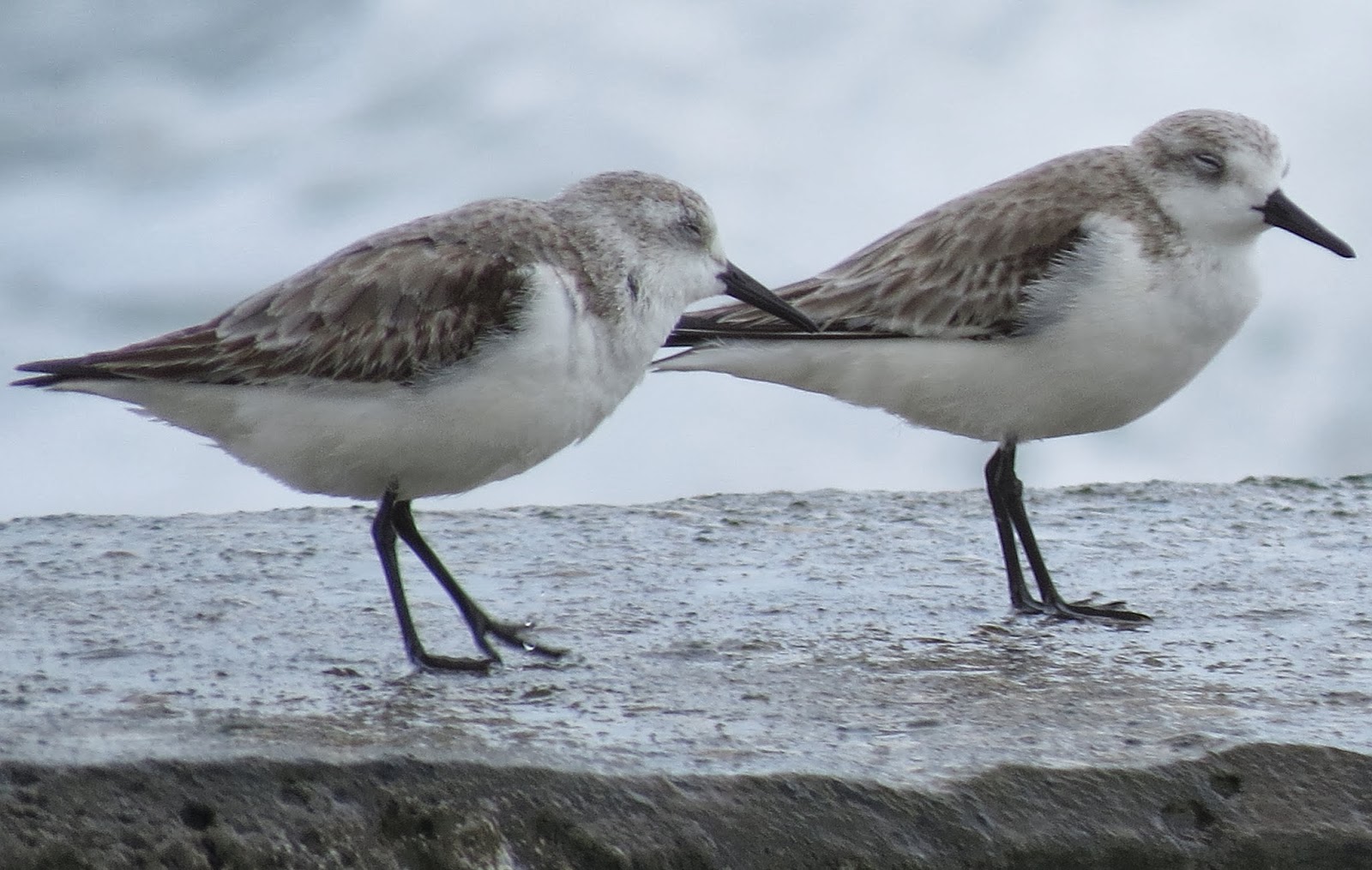I saved this one for a rainy day!
No drama today. Just rest. And I thought back to the last few days.
On Sunday, January 26, I drove out to Allapattah Flats in Martin County. This is a very large multi-use tract of land which is a remnant of the large swamp that was drained to permit agriculture in the 1940's and 1950's. Some of the damage done by these drainage programs is being reversed slowly. Still, a fraction of the original inland wetlands exist. They once stretched from north of Orlando to Florida Bay. You know the southern portion as the Everglades.
The last few days did remind me of our spring, with familiar plants and birds in spring garb and song.
We see Violets at home in eastern Ontario in April-May. Here at Allapattah Flats, on Sunday, they were springing up all over. The species is well named: Bog White Violet Viola lanceolata. In Ontario, this is a plant found in boggy conditions. Much of the interior of Florida has similar ecological conditions. The leaves are lanceolate, a very unusual form of leaf for violets.
One bird that catches the eye is the Loggerhead Shrike. This is a handsome predatory bird. Its cousin, the Northern Shrike is appearing in good numbers in Eastern Ontario this winter. They both live in open areas, where they hunt and impale their prey on convenient shrubs, like Hawthorn. For reasons as yet not fully understood, the Loggerhead Shrike has become an endangered species in Canada. But, it thrives in the Savannas and even parks in South Florida. It doesn't happen often, but for a very brief period in late April and Early May in Eastern Ontario, it is possible to see both-the Northern Shrike before it migrates back to the North and the Loggerhead, arriving from southern climes to nest. I saw three Loggerheads in Allapattah Flats. Here is one of them: It was looking forward, until I used my patented technique of causing this bird to turn its head. I yelled: Hey Shrike!
In several areas in central and in coastal Florida, I have encountered these familiar birds in large flocks of hundreds. You know how territorial they are when they arrive in your neighbourhood. Here in Florida, I have seen them crowded together singing spring tunes, as shown in the photos below, the first to ensure that you recognize the bird, the second to give you an idea of the numbers.
Someone commented, after I told them about their penchant for eating ( and spreading) the invasive Brazilian Pepper fermented fruit, that perhaps they were like young men in a bar after a few drinks....just a little tipsy singing the songs everyone knows. Perhaps.....
At Allapattah Flats, I also saw a familiar butterfly, the only one of this kind I have seen down here.....and one we will see in Eastern Ontario later in Spring, the Pearl Crescent, Phyclodes tharos. I missed the photo...but just after seeing this familiar butterfly, I caught a glimpse of a male Common Yellow Throat Warbler in full spring regalia. Soldier on, dear northerners, Spring is warming up and getting ready to roll.
At the Paleo Hammock Preserve, there were a few Florida specialties, scenes one only sees here. The Spaniards left two of their shipboard meal items here and there in the 16th Century that are still found today. One is the Seville Orange, which did usher in Florida's citrus industry. The other has gone squealing away into the woods before I could get their photos-the feral pigs, which have spread far and wide, and cause damage to the environment, including many ground nesting birds, lizards, snakes and any other living thing they find, being, like us, true omnivores.
While across Carlton Road, in Teague Hammock, I saw one of the shyer members of the Heron/Egret Family of waders, the Green Heron, which also nests in Eastern Ontario wetlands:
And speaking of wetlands, the largest central Florida marsh, fed solely by rainwater, and which covers 1000 acres with the 10000 acre Savannas Preserve State Park, in the heart of the City of Port St. Lucie has been a focus for me in the last two years. This is the view, best explored by canoe or Kayak:
Happy mid week, and hopefully those suffering the very frigid air from Northern Florida to Pennsylvania get a break soon!






















































